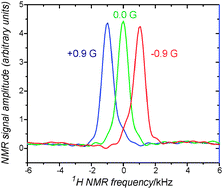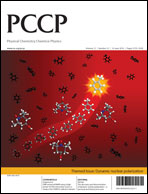We evaluate the feasibility of 1H nuclear magnetic resonance (NMR) imaging with sub-micron voxel dimensions using a combination of low temperatures and dynamic nuclear polarization (DNP). Experiments are performed on nitroxide-doped glycerol–water at 9.4 T and temperatures below 40 K, using a 30 mW tunable microwave source for DNP. With DNP at 7 K, a 0.5 μL sample yields a 1H NMR signal-to-noise ratio of 770 in two scans with pulsed spin-lock detection and after 80 db signal attenuation. With reasonable extrapolations, we infer that 1H NMR signals from 1 μm3 voxel volumes should be readily detectable, and voxels as small as 0.03 μm3 may eventually be detectable. Through homonuclear decoupling with a frequency-switched Lee–Goldburg spin echo technique, we obtain 830 Hz 1H NMR linewidths at low temperatures, implying that pulsed field gradients equal to 0.4 G/d or less would be required during spatial encoding dimensions of an imaging sequence, where d is the resolution in each dimension.

You have access to this article
 Please wait while we load your content...
Something went wrong. Try again?
Please wait while we load your content...
Something went wrong. Try again?


 Please wait while we load your content...
Please wait while we load your content...